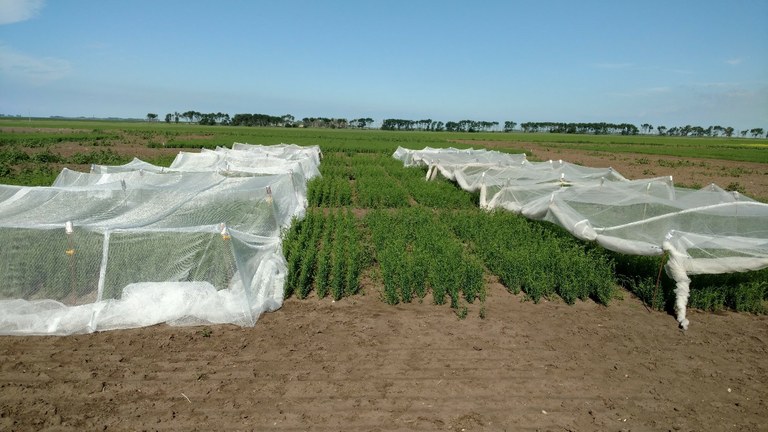Happy Fourth of ‘Bee’ly
Did you know that is takes roughly 2 million visits to a flower for bees to make 1 lb of honey? Right now we are entering peak blooming season for many North Dakota crops, including soybeans, canola, flax, and dry beans. Many of our flowering crops do not require bees for pollination, yet we know that bees are collecting pollen from them anyway. Have you ever wondered if those bee visits are affecting your crop yields? That is exactly what we are hoping to find out at the Carrington Research Extension Center.
Bee culture is complicated. I like to view bees in two categories; honey bees and native bees. We have a few research projects aimed to answer questions about both categories. This year we have installed scales and pollen traps on the honey bee hives at the CREC. With the diversity of flowering crops grown here, we are hoping to learn which crops the bees are visiting most (by testing the pollen) and learn about the amount of honey being produced throughout the year. Following is a graph depicting the weight gains of one hive since they’ve been in place (Figure 1). The hive weight changes regularly because 1) the bees leave during the day (dips) and come back in the evening (humps), and 2) because they are making honey.

Figure 1. Temperature and weight changes of a bee hive over nearly three weeks in June 2018. The green line indicates temperature and the orange indicates hive weight.
The other category of bees is the native pollinators. It is more difficult to measure what they do on a daily basis due to the number of species and living spaces involved. But, we can start to estimate their contributions to agriculture. We have started a few projects that will be identifying which species interact with our crops and how much they may be contributing to crop yields. Figure 2 shows a flax study that will either allow insect pollination or prevent it from happening. We will measure yield and identify pollinator visitors from this trial to see if pollinators could be benefiting flax in any way. This ties into a larger project that will begin next year which will try to measure the influence of conservation pollinator plantings on the surrounding crops. To summarize, we know that pollinators are important to North Dakota’s landscape, we just want to know which cash crops they affect and by how much.

Figure 2. Nets set up for bee exclusion (left) and bee inclusion (right) in flax at the CREC.
Mike Ostlie
Mike.Ostlie@ndsu.edu
Research Agronomist


